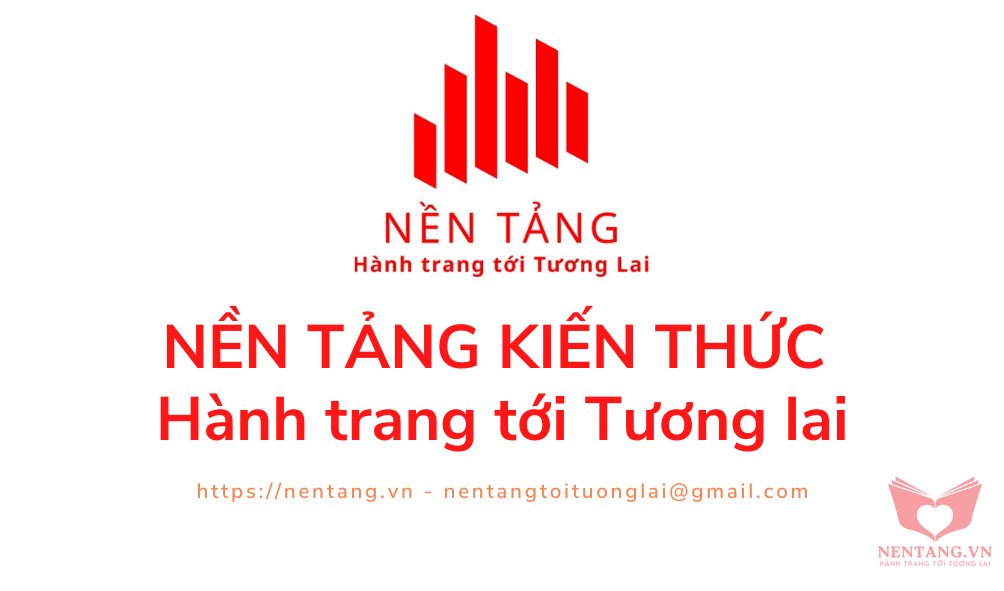


Chương 3-Bài 4. Biến (variables) và kiểu dữ liệu nguyên thủy (primitive data types) trong Java
Số phút học: 33 phút
Biến (variable) trong Java
Biến (variable) là một vùng nhớ trong máy tính dùng để lưu trữ giá trị (thường lưu trữ trên RAM máy tính).
Cú pháp khai báo biến (declare variable syntax)
data_type variable_name = value;
Trong đó:
data_type: kiểu dữ liệu của biếnvariable_name: tên biếnvalue: giá trị của biến
Ví dụ:
// Khai báo 3 biến tên "a", "b", "c" // - Có kiểu dữ liệu số nguyên int // - Không có giá trị ban đầu int a, b, c; // Khai báo 2 biến tên "diem_lt", "diem_th" // - Có kiểu dữ liệu số nguyên int // - Có gán giá trị ban đầu int diem_lt = 10, diem_th = 3; // Khai báo biến tên "B" // - Có kiểu dữ liệu byte // - Có giá trị ban đầu byte B = 22; // Khai báo biến tên "kytu" // - Có kiểu dữ liệu char // - Có giá trị ban đầu char kytu = 'c';
Quy tắt đặt tên biến (variable's name rule)
Tên biến cần tuân theo các quy tắt sau:
- Không bắt đầu bằng số.
- Không chứa các ký tự đặc biệt như (!@#$%^&*()+-*/...).
- Không đặt tên trùng với các từ khóa (keywords) của java.
- Phân biệt HOA thường.
Các từ khóa trong Java (java keywords)
| Sr.No | Reserved Words & Description |
|---|---|
| 1 | abstract
As per dictionary, abstraction is the quality of dealing with ideas rather than events. |
| 2 | assert
assert keyword is used in Java to define assertion. An assertion is a statement in Java which ensures the correctness of any assumptions which have been done in the program. |
| 3 | boolean
boolean datatype is one of the eight primitive datatype supported by Java. It provides means to create boolean type variables which can accept a boolean value as true or false. |
| 4 | break
The break statement in Java programming language has the following two usages −
|
| 5 | byte
byte datatype is one of the eight primitive datatype supported by Java. It provides means to create byte type variables which can accept a byte value. |
| 6 | case
case keyword is part of switch statement which allows a variable to be tested for equality against a list of values. |
| 7 | catch
An exception (or exceptional event) is a problem that arises during the execution of a program. |
| 8 | char
char datatype is one of the eight primitive datatype supported by Java. |
| 9 | class
Java is an Object-Oriented Language. As a language that has the Object-Oriented feature. |
| 10 | const
final keyword is used to define constant value or final methods/classes in Java. |
| 11 | continue
The continue keyword can be used in any of the loop control structures. |
| 12 | default
default keyword is part of switch statement which allows a variable to be tested for equality against a list of values. |
| 13 | do
A do...while loop is similar to a while loop, except that a do...while loop is guaranteed to execute at least one time. |
| 14 | double
double datatype is one of the eight primitive datatype supported by Java. |
| 15 | if
An if statement can be followed by an optional else statement, which executes when the Boolean expression is false. |
| 16 | enum
The Java Enum class is the common base class of all Java language enumeration types. |
| 17 | extends
extends is the keyword used to inherit the properties of a class. Following is the syntax of extends keyword. |
| 18 | final
final keyword is used to define constant value or final methods/classes in Java. |
| 19 | finally
finally keyword is used to define a finally block. The finally block follows a try block or a catch block. A finally block of code always executes, irrespective of occurrence of an Exception. |
| 20 | float
float datatype is one of the eight primitive datatype supported by Java. It provides means to create float type variables which can accept a float value. |
| 21 | for
A for loop is a repetition control structure that allows you to efficiently write a loop that needs to be executed a specific number of times. |
| 22 | goto
goto statement is not supported by Java currrenly. It is kept as a reserved keyword for future. As an alternative, Java supports labels with break and continue statement. |
| 23 | if
An if statement consists of a Boolean expression followed by one or more statements. |
| 24 | implements
Generally, the implements keyword is used with classes to inherit the properties of an interface. |
| 25 | import
import keyboard is used in context of packages. |
| 26 | instanceof
instanceof keyword is an operator which is used only for object reference variables. |
| 27 | int
int datatype is one of the eight primitive datatype supported by Java. |
| 28 | interface
An interface is a reference type in Java. It is similar to class. It is a collection of abstract methods. |
| 29 | long
long datatype is one of the eight primitive datatype supported by Java. |
| 30 | native |
| 31 | new |
| 32 | package
Packages are used in Java in order to prevent naming conflicts, to control access, to make searching/locating and usage of classes, interfaces, enumerations and annotations easier, etc. |
| 33 | private
Methods, variables, and constructors that are declared private can only be accessed within the declared class itself. |
| 34 | protected
The protected access modifier cannot be applied to class and interfaces. |
| 35 | public
A class, method, constructor, interface, etc. declared public can be accessed from any other class. |
| 36 | return |
| 37 | short
By assigning different data types to variables, you can store integers, decimals, or characters in these variables. |
| 38 | static
The static keyword is used to create variables that will exist independently of any instances created for the class. |
| 39 | strictfp |
| 40 | super
The super keyword is similar to this keyword. |
| 41 | switch
A switch statement allows a variable to be tested for equality against a list of values. |
| 42 | synchronized |
| 43 | this
this keyword is a very important keyword to identify an object. Following are the usage of this keyword. |
| 44 | throw
If a method does not handle a checked exception, the method must declare it using the throws keyword. |
| 45 | transient
Serialization is a concept using which we can write the state of an object into a byte stream so that we can transfer it over the network (using technologies like JPA and RMI). |
| 46 | try
A method catches an exception using a combination of the try and catch keywords. |
| 47 | void |
| 48 | volatile |
| 49 | while
A while loop statement in Java programming language repeatedly executes a target statement as long as a given condition is true. |
Kiểu dữ liệu nguyên thủy (primitive data types) trong Java
Trong Java cung cấp các kiểu dữ liệu nguyên thủy (primitive data types) - mà có thể làm nền tảng để kết hợp thành các kiểu dữ liệu phứt hợp sau này như sau:
- byte
- short
- int
- long
- float
- double
- boolean
- char
Nhóm kiểu dữ liệu số nguyên
1. Kiểu dữ liệu (data type) byte trong Java
- Là số nguyên có độ dài 8-bit.
- Min value:
-128 (-2^7) - Max value:
127 (2^7 - 1) - Default value:
0 - Ví dụ:
byte a = 100; byte b = -33;
2. Kiểu dữ liệu (data type) short trong Java
- Là số nguyên có độ dài 16-bit.
- Min value:
-32,768 (-2^15) - Max value:
32,767 (2^15 - 1) - Default value:
0 - Ví dụ:
short a = 10000; short b = -20000;
3. Kiểu dữ liệu (data type) int trong Java
- Là số nguyên có độ dài 32-bit.
- Min value:
-2,147,483,648 (-2^31) - Max value:
2,147,483,647 (2^31 - 1) - Default value:
0 - Ví dụ:
int tong_so_luong = 230000000; int b = -22222222;
4. Kiểu dữ liệu (data type) long trong Java
- Là số nguyên có độ dài 64-bit.
- Min value:
-9,223,372,036,854,775,808 (-2^63) - Max value:
9,223,372,036,854,775,807 (2^63 - 1) - Default value:
0L - Ví dụ:
long a = 1000000000L; long b = -20000000L;
Nhóm kiểu dữ liệu số thực
5. Kiểu dữ liệu (data type) float trong Java
- Là số thực có độ dài 32-bit.
- Min value:
1.4E^-45f - Max value:
3.4028235^+38f - Default value:
0 - Ví dụ:
float diem_lt = 6.5f; float gia_tien = 1999.99f;
6. Kiểu dữ liệu (data type) double trong Java
- Là số thực có độ dài 64-bit.
- Min value:
4.9^-324d - Max value:
1.79769313486231570^+308d - Default value:
0 - Ví dụ:
double thanh_tien = 125000000.964535d;
Nhóm kiểu dữ liệu Logic (đúng/sai)
7. Kiểu dữ liệu (data type) bool trong Java
- Có độ dài 1-bit.
- Chỉ bao gồm 2 giá trị:
truehoặcfalse - Default value:
false - Ví dụ:
bool da_dang_nhap = false; bool co_hoa_don = true;
Nhóm kiểu dữ liệu Ký tự (characters)
8. Kiểu dữ liệu (data type) char trong Java
- Có độ dài 1 ký tự unicode 16-bit.
- Min value:
\uffff - Max value:
\u0000(0) - Default value:
\u0000 - Ví dụ:
char kytu = 'c';
char letter = '\u0051';
System.out.println(letter);
char letter1 = '9';
System.out.println(letter1);
char letter2 = 65;
System.out.println(letter2);
9. Kiểu dữ liệu (data type) bỗ trợ xâu chuỗi String trong Java
- Trong Java có hỗ trợ kiểu dữ liệu tập hợp xâu các chuỗi:
java.lang.String - Default value:
"" - Ví dụ:
String hoten = "Duong Nguyen Phu Cuong"; String diachi = "123 Ly Tu Trong, Quan Ninh Kieu, TP Can Tho";
Bình luận
Bình luận của bạnNền tảng các kiến thức học tập
Cùng nhau học tập, khám phá các kiến thức nền tảng về Lập trình web, mobile, database nhé.
Nền tảng kiến thức - Hành trang tới tương lai hân hạnh phục vụ Quý khách!
Khám phá, trải nghiệm ngay

Vui lòng đăng nhập để gởi bình luận!
Đăng nhậpChưa có bình luận nào!